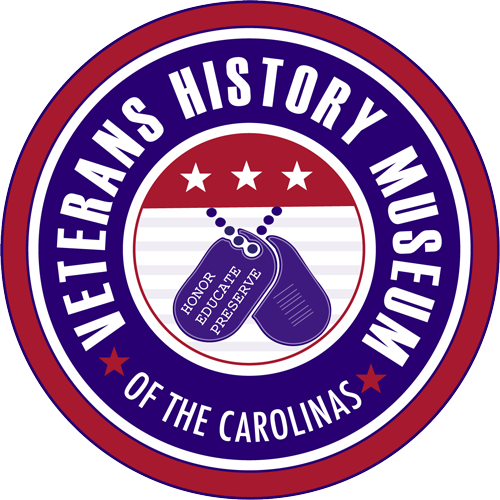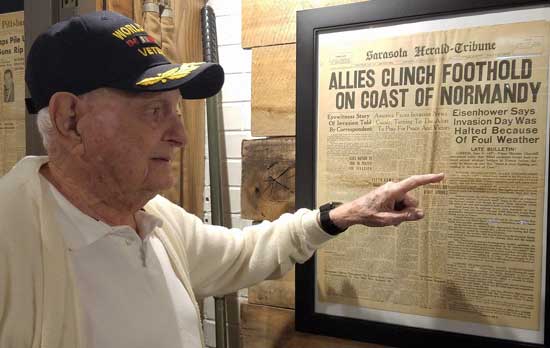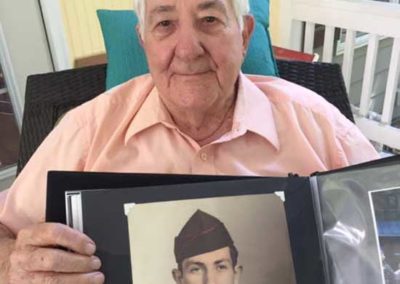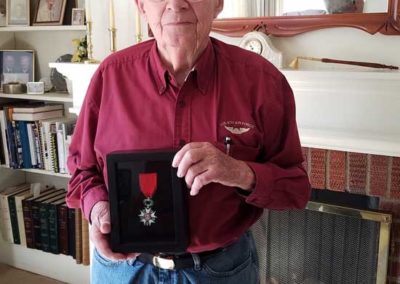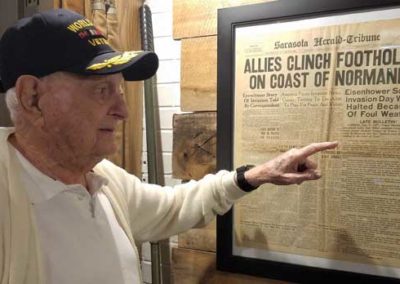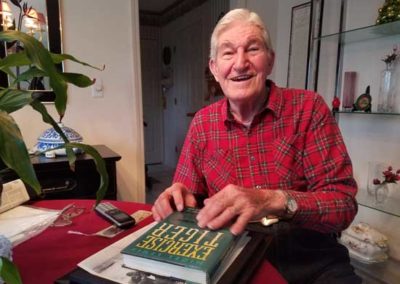The Most Important Weather Forecast in History
“The Most Important Weather Forecast in History”—when you hear that phrase, especially this week, you know the reference is to D-Day, when the Allied invasion of Normandy was held up because of pouring rain.
D-Day was originally set for June 5 but storms forced allied leader Gen. Dwight Eisenhower to postpone for 24 hours. Without a break in the weather, D-Day would have to be put off two weeks until tides and moon were right again. Allied meteorologists predicted that break, small though it was, for June 6. Eisenhower launched the invasion with a simple: “OK, we’ll go.
Planes, ships, and troops were mobilized around midnight—the earliest hours of June 6, 1944.
The Veterans History Museum of the Carolinas has partnered with AccuWeather to create the documentary titled “The Most Accurate Weather Forecast in History”, featuring interviews with veterans who were part of that historic invasion 75 years ago this week.
Four D-Day veterans from Western North Carolina will appear in the documentary. Ray Pegram of Spindale, served in the U.S. Army Air Corps. He was a radio operator in a C-47 which dropped Pathfinder paratroops into Normandy to set up drop zones. His unit also flew supplies to Patton’s Third Army as they pushed across France and into Germany
Charles Dickson of Flat Rock was one of the paratroopers with the 82nd Airborne who jumped into Sainte-Mère-Église, France before daylight on D-Day. They protected essential bridges from being blown up by the Germans. He also fought in the Battle of the Bulge.
George Sarros of Flat Rock was a U.S. Navy motor machinist, served on an LST (Landing Craft, Transport) that delivered tanks, ambulances, and troops to the Normandy beach. Later, they ferried those ambulances back to England—ambulances carrying our wounded troops.
Lawrence Hoffman of Brevard, U.S. Army Artillery, was a soldier who waded onto the beach at Normandy on day 6 of the invasion to defeat the Germans, and whose unit freed two concentration camps, fed the starving prisoners. Hoffman fought in five battles.
Each of these men played a vital role in the military operation that has been called, “the beginning of the end of World War II”.
Museum volunteers Ken Corn, Mike McCarthy, and Janis Allen introduced D-Day veterans to AccuWeather’s videographer, Andy Coates, and conducted interviews in their homes to capture their memories of the D-Day invasion on video. This short (45-second) video titled “Weathering History” is now showing on the AccuWeather web site, http://www.accuweather.com/en/weather-news/DDayanniversary, and on DIRECTV.
The Veterans History Museum of the Carolinas proudly partners with many local, regional, and national groups such as AccuWeather to honor, educate and preserve the stories of our veterans and our proud military history.
